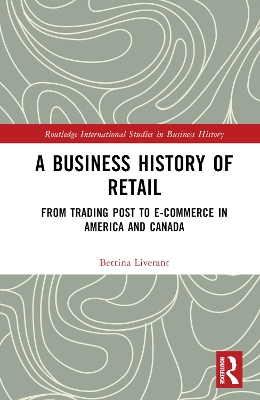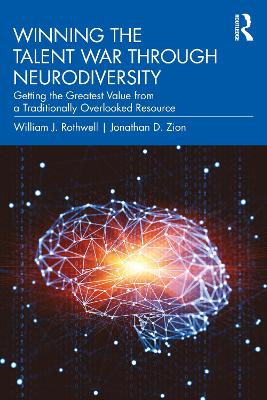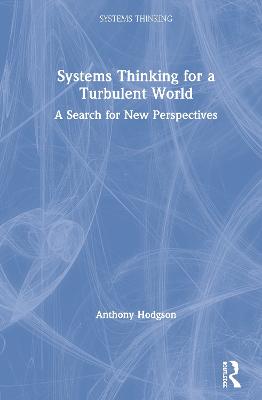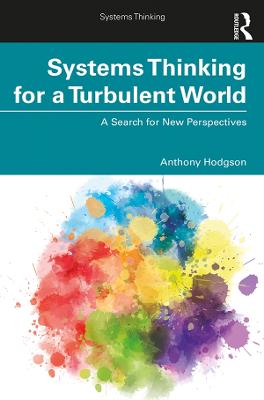Sustainable Self-Governance in Businesses and Society
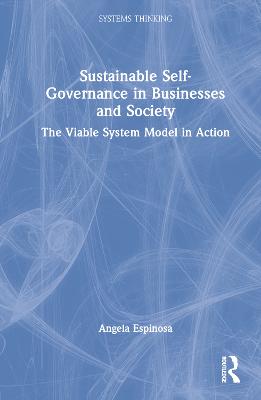 -10%
portes grátis
-10%
portes grátis
Sustainable Self-Governance in Businesses and Society
The Viable System Model in Action
Espinosa, Angela
Taylor & Francis Ltd
12/2022
286
Dura
Inglês
9781138590793
15 a 20 dias
453
Descrição não disponível.
List of Figures
List of Tables
Preface
Acknowledgments
List of Abbreviations
List of Contributors
Introduction
1. Towards Self-Governed Businesses and Societies
Systems, Complexity, and Cybernetics Sciences
Organisational Cybernetics
Complex Systems Sciences
Complexification in the 21st Century
Understanding Complexity (and Variety)
What is Complexity and Variety?
Organisational Elements (O, M, E)
Ashby's Law of Requisite Variety
Viability vs Complexity Management
Managing Variety and Learning
Organisational Learning and Development
Managing Complexity in Organisations
Why We Need to Evolve Towards Sustainable Self-Governed Organisations
Summary
2. Organisational Viability (and Sustainability)
The Need for More Resilient Organisations and Societies
What is a Viable and Sustainable (v&s) Organisation?
The Physiological Inspiration
The Viable System Model
System 1 (S1)
System 2 (S2)
System 3 (S3)
S3: Generating Synergies
Aligning Meta-Systemic and Operational Management
Complementarity of S3 and S2 Roles
The Control Dilemma
System 3* (S3*)
System 4 (S4)
System 5 (S5)
The Recursive Viable System Theorem
Managing Complexity: Organisational Principles
Responsible Autonomy
Self-Regulation
Adaptation
Self-Governance
Sustainable Self-Governance
Leaving Behind Earlier Critics of the VSM
3. A Methodology to Support Self-transformation Towards Viability and Sustainability
On VSM Methodologies
Developing the Self-Transformation Methodology (STM)
The Ontology of the Observer
The STM: A Systemic Methodology to Facilitate Organisation Learning
On VSM Epistemology
The Self-Transformation Methodology in a Nutshell
Designing and Starting a v&s Project
Agreements on Organisational Identity
Rich Pictures - The Organisational Landscape
Statement of Organisational Identity
Recursive Analysis
VSM Preliminary Diagnosis
Mapping the Viable System of the System in Focus
Doing a VSM Preliminary Diagnosis
Complete VSM Diagnosis
Mapping v&s Roles and Mechanisms
Identifying and Mapping Diagnostic Issues
Assessing System 1's Interactions
The Inside and Now (Systems 1, 2, and 3)
The Outside and Then (Systems 3, 4, and 5)
Aligning Strategy, Structure, and Information Systems
Aligning Strategy and Structure
Strategic Information Management
Self-Transformation Projects and Plan
Monitoring and Assessing Performance
Team Syntegrity
Summary
4. Towards More Resilient and Healthier Organisations and Societies
Organisational Health, Resilience, and Self-Governance
Early Alarms from the COVID-19 Pandemic
Towards More Resilient Individuals
Representing an Individual as a Viable (and Sustainable) System
Towards More Viable and Sustainable Individuals
Early Alarms to Businesses v&s
Towards More Resilient Businesses
Case study - M*Clean (with A.C. Martinez)
Towards More Resilient Health Providers
Preliminary VSM Analysis of the NHS in England
VSM Diagnosis of a Surgery Unit in a Local English Health Trust (with J. Walker and K. Grover)
Conclusions
5. 'Fits like a Glove': The VSM for Supporting More Systemic Educational Organisations
From Non-Systemic to Systemic Education and Educational Institutions
What Is a Non-Systemic Approach to Education?
Towards More Systemic Educational Institutions
Self-Transformation of ELF - The Whole Story (with Jon Walker and Vladimir Pop)
Clarifying the School's Identity
Recursive Analysis
VSM Diagnosis
Aligning Strategy, Structure, and Information Systems
Self-Transformation Projects and Plan
Monitoring and Assessing Performance
Reviewing Elf's Self-Transformation
Designing TINTA, a Systemic Education Online Provider (with G. Ramirez)
TINTA's Approach to Systemic Education
Agreeing on TINTA's Identity
Recursive Analysis - TINTA's Primary Services
Designing TINTA's Organisation with VSM Criteria
TINTA Coming to Life: First Self-Assessment
Systemic Education in Higher Education Institutions
Systemic Management in Universities around the World
Magdalena University (v&s) Case Study
Self-Transformation of Educational Institutions - Post-COVID-19
6. v&s in Organisational Networks
Complex Organisational Systems as Social Networks
The Rise of Social Networks (21st Century)
What is a v&s Network?
Background Research on VSM and Social Networks
Example: A v&s Industrial Network
Designing a State-Owned Enterprise on a Complex Environment (with A. Al Hinai and J. Walker)
Complexity Challenges to Design a National Broadband Network
VSM Design of the OBC
VSM Design
Social Network Analysis
Five Years Later
Redesigning a Latin-American 2nd Generation Broadband Network (with M. Giraldo and J. Walker)
The N2BN Identity
Recursive Analysis
VSM Diagnosis
Aligning Strategy and Structure
Designing Strategies for Supply Chain Integration at the UK Offshore Wind Industry (with Julija Danilova)
Analysing SCI with the STM
VSM Findings
Suggested Reorganisation Strategies
Learning from the Research
Dilemmas of Self-Governance in Organisational Networks
7. Sustainable Self-Governance
Contemporary Approaches to Governance
Traditional Approaches to Governance
Collaborative Approaches to Governance
Sustainable Self-Governance (v&s)
Towards Sustainable Self-Governance
A Framework to Assess Sustainable Self-Governance
Example: Sustainable Self-Governance in a Socio-Ecological System
Assessing Self-Governance in an Indigenous Community in the Amazon (with C. Duque)
Background on Their Governance Structures
VSM Analysis of Their Governance Structures
Learning from the v&s Project (by C. Duque)
Sustainable Self-Governance in an Afro-Caribbean Community (with C. Duran)
Past and Present of the Orika Community Council (OCC)
Assessing Sustainable Self-Governance at Orika
Learning from the Case Study (by C. Duran)
Conclusions
8. Facilitating Systemic Change with the VSM
Systemic Change: What It Is and How It Can Be Done
The Cybersyn Project
Strategic Information Management at the Colombian President's Office (1990-1992)
Re-Engineering the National Auditing Office (NAO) in Colombia
Redesigning the NAO
The Model of the State
Implementing the 'Systemic Auditing Process'
Learning from the Project
Monitoring the Impact of National Programs to Reduce Poverty in Colombia
Redesigning the National School System (NSS) in Colombia
Developing the National Environmental System (NES) in Colombia
The Relevance of Beers' Legacy to Facilitate Systemic Change
The Need for Massive Systemic Changes to Improve Response to the COVID-19 Pandemic
9. An Idea Whose Time Has Come
Lessons on Using the VSM for Sustainable Self-Governance
Developing VSM-Related Methodologies and Tools
VSM and Multimethodology
VSM and Team Syntegrity
Addressing Traditional Criticisms to the VSM
VSM Research Landscape
Conclusions
Index
List of Tables
Preface
Acknowledgments
List of Abbreviations
List of Contributors
Introduction
1. Towards Self-Governed Businesses and Societies
Systems, Complexity, and Cybernetics Sciences
Organisational Cybernetics
Complex Systems Sciences
Complexification in the 21st Century
Understanding Complexity (and Variety)
What is Complexity and Variety?
Organisational Elements (O, M, E)
Ashby's Law of Requisite Variety
Viability vs Complexity Management
Managing Variety and Learning
Organisational Learning and Development
Managing Complexity in Organisations
Why We Need to Evolve Towards Sustainable Self-Governed Organisations
Summary
2. Organisational Viability (and Sustainability)
The Need for More Resilient Organisations and Societies
What is a Viable and Sustainable (v&s) Organisation?
The Physiological Inspiration
The Viable System Model
System 1 (S1)
System 2 (S2)
System 3 (S3)
S3: Generating Synergies
Aligning Meta-Systemic and Operational Management
Complementarity of S3 and S2 Roles
The Control Dilemma
System 3* (S3*)
System 4 (S4)
System 5 (S5)
The Recursive Viable System Theorem
Managing Complexity: Organisational Principles
Responsible Autonomy
Self-Regulation
Adaptation
Self-Governance
Sustainable Self-Governance
Leaving Behind Earlier Critics of the VSM
3. A Methodology to Support Self-transformation Towards Viability and Sustainability
On VSM Methodologies
Developing the Self-Transformation Methodology (STM)
The Ontology of the Observer
The STM: A Systemic Methodology to Facilitate Organisation Learning
On VSM Epistemology
The Self-Transformation Methodology in a Nutshell
Designing and Starting a v&s Project
Agreements on Organisational Identity
Rich Pictures - The Organisational Landscape
Statement of Organisational Identity
Recursive Analysis
VSM Preliminary Diagnosis
Mapping the Viable System of the System in Focus
Doing a VSM Preliminary Diagnosis
Complete VSM Diagnosis
Mapping v&s Roles and Mechanisms
Identifying and Mapping Diagnostic Issues
Assessing System 1's Interactions
The Inside and Now (Systems 1, 2, and 3)
The Outside and Then (Systems 3, 4, and 5)
Aligning Strategy, Structure, and Information Systems
Aligning Strategy and Structure
Strategic Information Management
Self-Transformation Projects and Plan
Monitoring and Assessing Performance
Team Syntegrity
Summary
4. Towards More Resilient and Healthier Organisations and Societies
Organisational Health, Resilience, and Self-Governance
Early Alarms from the COVID-19 Pandemic
Towards More Resilient Individuals
Representing an Individual as a Viable (and Sustainable) System
Towards More Viable and Sustainable Individuals
Early Alarms to Businesses v&s
Towards More Resilient Businesses
Case study - M*Clean (with A.C. Martinez)
Towards More Resilient Health Providers
Preliminary VSM Analysis of the NHS in England
VSM Diagnosis of a Surgery Unit in a Local English Health Trust (with J. Walker and K. Grover)
Conclusions
5. 'Fits like a Glove': The VSM for Supporting More Systemic Educational Organisations
From Non-Systemic to Systemic Education and Educational Institutions
What Is a Non-Systemic Approach to Education?
Towards More Systemic Educational Institutions
Self-Transformation of ELF - The Whole Story (with Jon Walker and Vladimir Pop)
Clarifying the School's Identity
Recursive Analysis
VSM Diagnosis
Aligning Strategy, Structure, and Information Systems
Self-Transformation Projects and Plan
Monitoring and Assessing Performance
Reviewing Elf's Self-Transformation
Designing TINTA, a Systemic Education Online Provider (with G. Ramirez)
TINTA's Approach to Systemic Education
Agreeing on TINTA's Identity
Recursive Analysis - TINTA's Primary Services
Designing TINTA's Organisation with VSM Criteria
TINTA Coming to Life: First Self-Assessment
Systemic Education in Higher Education Institutions
Systemic Management in Universities around the World
Magdalena University (v&s) Case Study
Self-Transformation of Educational Institutions - Post-COVID-19
6. v&s in Organisational Networks
Complex Organisational Systems as Social Networks
The Rise of Social Networks (21st Century)
What is a v&s Network?
Background Research on VSM and Social Networks
Example: A v&s Industrial Network
Designing a State-Owned Enterprise on a Complex Environment (with A. Al Hinai and J. Walker)
Complexity Challenges to Design a National Broadband Network
VSM Design of the OBC
VSM Design
Social Network Analysis
Five Years Later
Redesigning a Latin-American 2nd Generation Broadband Network (with M. Giraldo and J. Walker)
The N2BN Identity
Recursive Analysis
VSM Diagnosis
Aligning Strategy and Structure
Designing Strategies for Supply Chain Integration at the UK Offshore Wind Industry (with Julija Danilova)
Analysing SCI with the STM
VSM Findings
Suggested Reorganisation Strategies
Learning from the Research
Dilemmas of Self-Governance in Organisational Networks
7. Sustainable Self-Governance
Contemporary Approaches to Governance
Traditional Approaches to Governance
Collaborative Approaches to Governance
Sustainable Self-Governance (v&s)
Towards Sustainable Self-Governance
A Framework to Assess Sustainable Self-Governance
Example: Sustainable Self-Governance in a Socio-Ecological System
Assessing Self-Governance in an Indigenous Community in the Amazon (with C. Duque)
Background on Their Governance Structures
VSM Analysis of Their Governance Structures
Learning from the v&s Project (by C. Duque)
Sustainable Self-Governance in an Afro-Caribbean Community (with C. Duran)
Past and Present of the Orika Community Council (OCC)
Assessing Sustainable Self-Governance at Orika
Learning from the Case Study (by C. Duran)
Conclusions
8. Facilitating Systemic Change with the VSM
Systemic Change: What It Is and How It Can Be Done
The Cybersyn Project
Strategic Information Management at the Colombian President's Office (1990-1992)
Re-Engineering the National Auditing Office (NAO) in Colombia
Redesigning the NAO
The Model of the State
Implementing the 'Systemic Auditing Process'
Learning from the Project
Monitoring the Impact of National Programs to Reduce Poverty in Colombia
Redesigning the National School System (NSS) in Colombia
Developing the National Environmental System (NES) in Colombia
The Relevance of Beers' Legacy to Facilitate Systemic Change
The Need for Massive Systemic Changes to Improve Response to the COVID-19 Pandemic
9. An Idea Whose Time Has Come
Lessons on Using the VSM for Sustainable Self-Governance
Developing VSM-Related Methodologies and Tools
VSM and Multimethodology
VSM and Team Syntegrity
Addressing Traditional Criticisms to the VSM
VSM Research Landscape
Conclusions
Index
Este título pertence ao(s) assunto(s) indicados(s). Para ver outros títulos clique no assunto desejado.
anthropocene;complex problems;decision integrity;decision making;systems thinking;Jon Walker;VSM Analysis;Viable System Model;Recursive Organisation;Recursive Analysis;Team Syntegrity;Elf;Recursion Level;STM;S5's Role;Cybersyn Project;CAS Theory;Viable System;Vice Versa;Requisite Variety;Heterarchical Modes;Organisational Viability;Complex Organisational Networks;Extractive Development Model;OSW Project;Systemic Education;Ashby's Law;OSW Industry;DAOs;SNA Analysis
List of Figures
List of Tables
Preface
Acknowledgments
List of Abbreviations
List of Contributors
Introduction
1. Towards Self-Governed Businesses and Societies
Systems, Complexity, and Cybernetics Sciences
Organisational Cybernetics
Complex Systems Sciences
Complexification in the 21st Century
Understanding Complexity (and Variety)
What is Complexity and Variety?
Organisational Elements (O, M, E)
Ashby's Law of Requisite Variety
Viability vs Complexity Management
Managing Variety and Learning
Organisational Learning and Development
Managing Complexity in Organisations
Why We Need to Evolve Towards Sustainable Self-Governed Organisations
Summary
2. Organisational Viability (and Sustainability)
The Need for More Resilient Organisations and Societies
What is a Viable and Sustainable (v&s) Organisation?
The Physiological Inspiration
The Viable System Model
System 1 (S1)
System 2 (S2)
System 3 (S3)
S3: Generating Synergies
Aligning Meta-Systemic and Operational Management
Complementarity of S3 and S2 Roles
The Control Dilemma
System 3* (S3*)
System 4 (S4)
System 5 (S5)
The Recursive Viable System Theorem
Managing Complexity: Organisational Principles
Responsible Autonomy
Self-Regulation
Adaptation
Self-Governance
Sustainable Self-Governance
Leaving Behind Earlier Critics of the VSM
3. A Methodology to Support Self-transformation Towards Viability and Sustainability
On VSM Methodologies
Developing the Self-Transformation Methodology (STM)
The Ontology of the Observer
The STM: A Systemic Methodology to Facilitate Organisation Learning
On VSM Epistemology
The Self-Transformation Methodology in a Nutshell
Designing and Starting a v&s Project
Agreements on Organisational Identity
Rich Pictures - The Organisational Landscape
Statement of Organisational Identity
Recursive Analysis
VSM Preliminary Diagnosis
Mapping the Viable System of the System in Focus
Doing a VSM Preliminary Diagnosis
Complete VSM Diagnosis
Mapping v&s Roles and Mechanisms
Identifying and Mapping Diagnostic Issues
Assessing System 1's Interactions
The Inside and Now (Systems 1, 2, and 3)
The Outside and Then (Systems 3, 4, and 5)
Aligning Strategy, Structure, and Information Systems
Aligning Strategy and Structure
Strategic Information Management
Self-Transformation Projects and Plan
Monitoring and Assessing Performance
Team Syntegrity
Summary
4. Towards More Resilient and Healthier Organisations and Societies
Organisational Health, Resilience, and Self-Governance
Early Alarms from the COVID-19 Pandemic
Towards More Resilient Individuals
Representing an Individual as a Viable (and Sustainable) System
Towards More Viable and Sustainable Individuals
Early Alarms to Businesses v&s
Towards More Resilient Businesses
Case study - M*Clean (with A.C. Martinez)
Towards More Resilient Health Providers
Preliminary VSM Analysis of the NHS in England
VSM Diagnosis of a Surgery Unit in a Local English Health Trust (with J. Walker and K. Grover)
Conclusions
5. 'Fits like a Glove': The VSM for Supporting More Systemic Educational Organisations
From Non-Systemic to Systemic Education and Educational Institutions
What Is a Non-Systemic Approach to Education?
Towards More Systemic Educational Institutions
Self-Transformation of ELF - The Whole Story (with Jon Walker and Vladimir Pop)
Clarifying the School's Identity
Recursive Analysis
VSM Diagnosis
Aligning Strategy, Structure, and Information Systems
Self-Transformation Projects and Plan
Monitoring and Assessing Performance
Reviewing Elf's Self-Transformation
Designing TINTA, a Systemic Education Online Provider (with G. Ramirez)
TINTA's Approach to Systemic Education
Agreeing on TINTA's Identity
Recursive Analysis - TINTA's Primary Services
Designing TINTA's Organisation with VSM Criteria
TINTA Coming to Life: First Self-Assessment
Systemic Education in Higher Education Institutions
Systemic Management in Universities around the World
Magdalena University (v&s) Case Study
Self-Transformation of Educational Institutions - Post-COVID-19
6. v&s in Organisational Networks
Complex Organisational Systems as Social Networks
The Rise of Social Networks (21st Century)
What is a v&s Network?
Background Research on VSM and Social Networks
Example: A v&s Industrial Network
Designing a State-Owned Enterprise on a Complex Environment (with A. Al Hinai and J. Walker)
Complexity Challenges to Design a National Broadband Network
VSM Design of the OBC
VSM Design
Social Network Analysis
Five Years Later
Redesigning a Latin-American 2nd Generation Broadband Network (with M. Giraldo and J. Walker)
The N2BN Identity
Recursive Analysis
VSM Diagnosis
Aligning Strategy and Structure
Designing Strategies for Supply Chain Integration at the UK Offshore Wind Industry (with Julija Danilova)
Analysing SCI with the STM
VSM Findings
Suggested Reorganisation Strategies
Learning from the Research
Dilemmas of Self-Governance in Organisational Networks
7. Sustainable Self-Governance
Contemporary Approaches to Governance
Traditional Approaches to Governance
Collaborative Approaches to Governance
Sustainable Self-Governance (v&s)
Towards Sustainable Self-Governance
A Framework to Assess Sustainable Self-Governance
Example: Sustainable Self-Governance in a Socio-Ecological System
Assessing Self-Governance in an Indigenous Community in the Amazon (with C. Duque)
Background on Their Governance Structures
VSM Analysis of Their Governance Structures
Learning from the v&s Project (by C. Duque)
Sustainable Self-Governance in an Afro-Caribbean Community (with C. Duran)
Past and Present of the Orika Community Council (OCC)
Assessing Sustainable Self-Governance at Orika
Learning from the Case Study (by C. Duran)
Conclusions
8. Facilitating Systemic Change with the VSM
Systemic Change: What It Is and How It Can Be Done
The Cybersyn Project
Strategic Information Management at the Colombian President's Office (1990-1992)
Re-Engineering the National Auditing Office (NAO) in Colombia
Redesigning the NAO
The Model of the State
Implementing the 'Systemic Auditing Process'
Learning from the Project
Monitoring the Impact of National Programs to Reduce Poverty in Colombia
Redesigning the National School System (NSS) in Colombia
Developing the National Environmental System (NES) in Colombia
The Relevance of Beers' Legacy to Facilitate Systemic Change
The Need for Massive Systemic Changes to Improve Response to the COVID-19 Pandemic
9. An Idea Whose Time Has Come
Lessons on Using the VSM for Sustainable Self-Governance
Developing VSM-Related Methodologies and Tools
VSM and Multimethodology
VSM and Team Syntegrity
Addressing Traditional Criticisms to the VSM
VSM Research Landscape
Conclusions
Index
List of Tables
Preface
Acknowledgments
List of Abbreviations
List of Contributors
Introduction
1. Towards Self-Governed Businesses and Societies
Systems, Complexity, and Cybernetics Sciences
Organisational Cybernetics
Complex Systems Sciences
Complexification in the 21st Century
Understanding Complexity (and Variety)
What is Complexity and Variety?
Organisational Elements (O, M, E)
Ashby's Law of Requisite Variety
Viability vs Complexity Management
Managing Variety and Learning
Organisational Learning and Development
Managing Complexity in Organisations
Why We Need to Evolve Towards Sustainable Self-Governed Organisations
Summary
2. Organisational Viability (and Sustainability)
The Need for More Resilient Organisations and Societies
What is a Viable and Sustainable (v&s) Organisation?
The Physiological Inspiration
The Viable System Model
System 1 (S1)
System 2 (S2)
System 3 (S3)
S3: Generating Synergies
Aligning Meta-Systemic and Operational Management
Complementarity of S3 and S2 Roles
The Control Dilemma
System 3* (S3*)
System 4 (S4)
System 5 (S5)
The Recursive Viable System Theorem
Managing Complexity: Organisational Principles
Responsible Autonomy
Self-Regulation
Adaptation
Self-Governance
Sustainable Self-Governance
Leaving Behind Earlier Critics of the VSM
3. A Methodology to Support Self-transformation Towards Viability and Sustainability
On VSM Methodologies
Developing the Self-Transformation Methodology (STM)
The Ontology of the Observer
The STM: A Systemic Methodology to Facilitate Organisation Learning
On VSM Epistemology
The Self-Transformation Methodology in a Nutshell
Designing and Starting a v&s Project
Agreements on Organisational Identity
Rich Pictures - The Organisational Landscape
Statement of Organisational Identity
Recursive Analysis
VSM Preliminary Diagnosis
Mapping the Viable System of the System in Focus
Doing a VSM Preliminary Diagnosis
Complete VSM Diagnosis
Mapping v&s Roles and Mechanisms
Identifying and Mapping Diagnostic Issues
Assessing System 1's Interactions
The Inside and Now (Systems 1, 2, and 3)
The Outside and Then (Systems 3, 4, and 5)
Aligning Strategy, Structure, and Information Systems
Aligning Strategy and Structure
Strategic Information Management
Self-Transformation Projects and Plan
Monitoring and Assessing Performance
Team Syntegrity
Summary
4. Towards More Resilient and Healthier Organisations and Societies
Organisational Health, Resilience, and Self-Governance
Early Alarms from the COVID-19 Pandemic
Towards More Resilient Individuals
Representing an Individual as a Viable (and Sustainable) System
Towards More Viable and Sustainable Individuals
Early Alarms to Businesses v&s
Towards More Resilient Businesses
Case study - M*Clean (with A.C. Martinez)
Towards More Resilient Health Providers
Preliminary VSM Analysis of the NHS in England
VSM Diagnosis of a Surgery Unit in a Local English Health Trust (with J. Walker and K. Grover)
Conclusions
5. 'Fits like a Glove': The VSM for Supporting More Systemic Educational Organisations
From Non-Systemic to Systemic Education and Educational Institutions
What Is a Non-Systemic Approach to Education?
Towards More Systemic Educational Institutions
Self-Transformation of ELF - The Whole Story (with Jon Walker and Vladimir Pop)
Clarifying the School's Identity
Recursive Analysis
VSM Diagnosis
Aligning Strategy, Structure, and Information Systems
Self-Transformation Projects and Plan
Monitoring and Assessing Performance
Reviewing Elf's Self-Transformation
Designing TINTA, a Systemic Education Online Provider (with G. Ramirez)
TINTA's Approach to Systemic Education
Agreeing on TINTA's Identity
Recursive Analysis - TINTA's Primary Services
Designing TINTA's Organisation with VSM Criteria
TINTA Coming to Life: First Self-Assessment
Systemic Education in Higher Education Institutions
Systemic Management in Universities around the World
Magdalena University (v&s) Case Study
Self-Transformation of Educational Institutions - Post-COVID-19
6. v&s in Organisational Networks
Complex Organisational Systems as Social Networks
The Rise of Social Networks (21st Century)
What is a v&s Network?
Background Research on VSM and Social Networks
Example: A v&s Industrial Network
Designing a State-Owned Enterprise on a Complex Environment (with A. Al Hinai and J. Walker)
Complexity Challenges to Design a National Broadband Network
VSM Design of the OBC
VSM Design
Social Network Analysis
Five Years Later
Redesigning a Latin-American 2nd Generation Broadband Network (with M. Giraldo and J. Walker)
The N2BN Identity
Recursive Analysis
VSM Diagnosis
Aligning Strategy and Structure
Designing Strategies for Supply Chain Integration at the UK Offshore Wind Industry (with Julija Danilova)
Analysing SCI with the STM
VSM Findings
Suggested Reorganisation Strategies
Learning from the Research
Dilemmas of Self-Governance in Organisational Networks
7. Sustainable Self-Governance
Contemporary Approaches to Governance
Traditional Approaches to Governance
Collaborative Approaches to Governance
Sustainable Self-Governance (v&s)
Towards Sustainable Self-Governance
A Framework to Assess Sustainable Self-Governance
Example: Sustainable Self-Governance in a Socio-Ecological System
Assessing Self-Governance in an Indigenous Community in the Amazon (with C. Duque)
Background on Their Governance Structures
VSM Analysis of Their Governance Structures
Learning from the v&s Project (by C. Duque)
Sustainable Self-Governance in an Afro-Caribbean Community (with C. Duran)
Past and Present of the Orika Community Council (OCC)
Assessing Sustainable Self-Governance at Orika
Learning from the Case Study (by C. Duran)
Conclusions
8. Facilitating Systemic Change with the VSM
Systemic Change: What It Is and How It Can Be Done
The Cybersyn Project
Strategic Information Management at the Colombian President's Office (1990-1992)
Re-Engineering the National Auditing Office (NAO) in Colombia
Redesigning the NAO
The Model of the State
Implementing the 'Systemic Auditing Process'
Learning from the Project
Monitoring the Impact of National Programs to Reduce Poverty in Colombia
Redesigning the National School System (NSS) in Colombia
Developing the National Environmental System (NES) in Colombia
The Relevance of Beers' Legacy to Facilitate Systemic Change
The Need for Massive Systemic Changes to Improve Response to the COVID-19 Pandemic
9. An Idea Whose Time Has Come
Lessons on Using the VSM for Sustainable Self-Governance
Developing VSM-Related Methodologies and Tools
VSM and Multimethodology
VSM and Team Syntegrity
Addressing Traditional Criticisms to the VSM
VSM Research Landscape
Conclusions
Index
Este título pertence ao(s) assunto(s) indicados(s). Para ver outros títulos clique no assunto desejado.
anthropocene;complex problems;decision integrity;decision making;systems thinking;Jon Walker;VSM Analysis;Viable System Model;Recursive Organisation;Recursive Analysis;Team Syntegrity;Elf;Recursion Level;STM;S5's Role;Cybersyn Project;CAS Theory;Viable System;Vice Versa;Requisite Variety;Heterarchical Modes;Organisational Viability;Complex Organisational Networks;Extractive Development Model;OSW Project;Systemic Education;Ashby's Law;OSW Industry;DAOs;SNA Analysis

